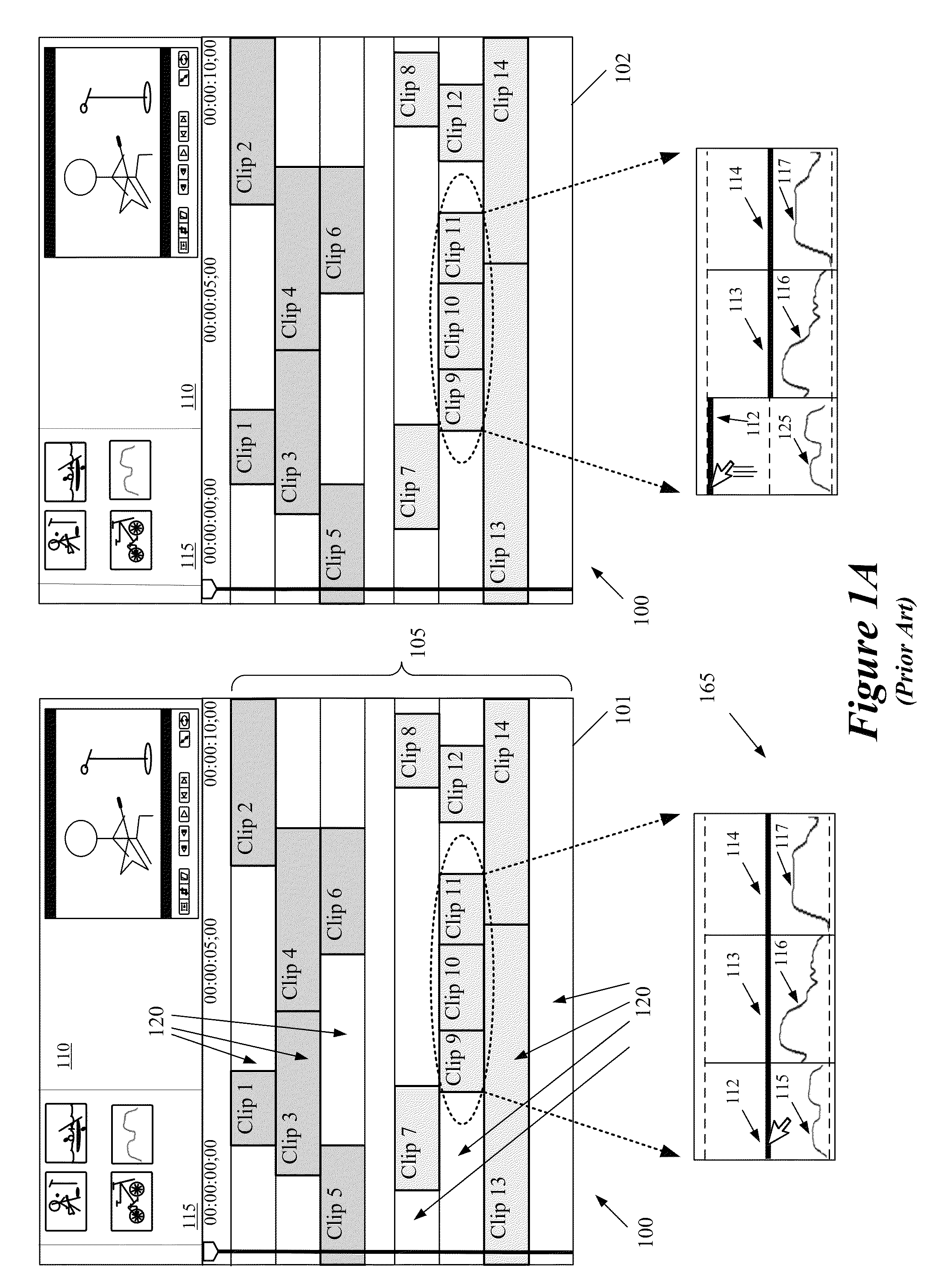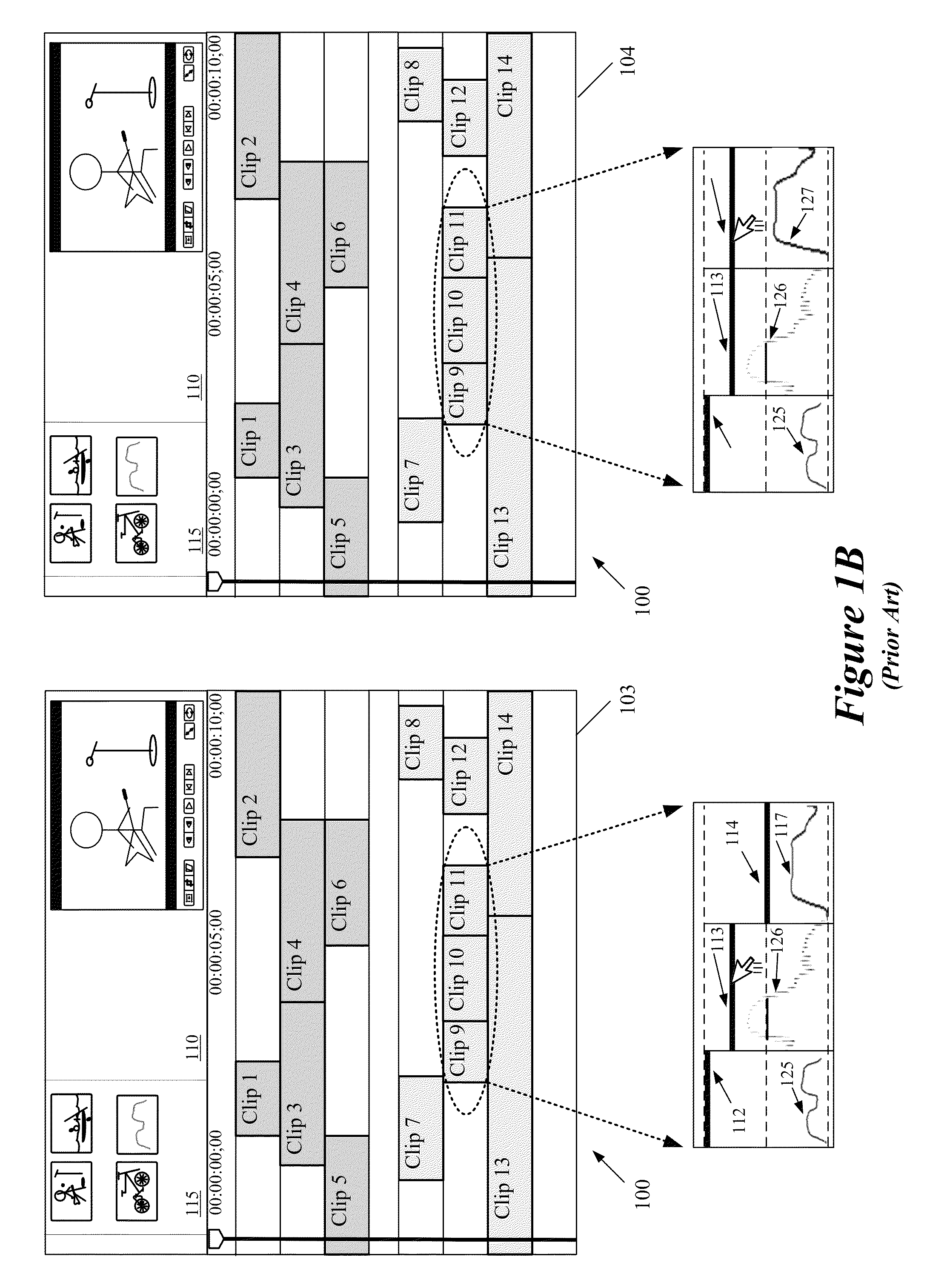Optimized volume adjustment
a volume adjustment and volume technology, applied in the field of optimizing volume adjustment, can solve the problems of difficulty in visually identifying different points such as maximum points and minimum points (or peaks and valleys) of the clip and aligning them to each other or to a specific time on a displayed timeline, and achieve the effect of better volume adjustmen
- Summary
- Abstract
- Description
- Claims
- Application Information
AI Technical Summary
Benefits of technology
Problems solved by technology
Method used
Image
Examples
Embodiment Construction
[0053]In the following detailed description of the invention, numerous details, examples, and embodiments of the invention are set forth and described. However, it will be clear and apparent to one skilled in the art that the invention is not limited to the embodiments set forth and that the invention may be practiced without some of the specific details and examples discussed.
[0054]Some embodiments provide a method for adjusting the sound volume of media clips. In some of these embodiments, volume adjuster graphs are provided to adjust the media clips volumes. Each volume adjuster graph includes one or more segments. The segments are either straight (e.g., horizontal, vertical, or diagonal lines) or curved (e.g., curved lines). The volume adjuster graphs are individually set for each clip based on the intrinsic (or absolute) volume values of the clip. In some embodiments, the volume adjuster graphs are set for each clip based on the peak value, RMS value, or loudness value of the c...
PUM
 Login to View More
Login to View More Abstract
Description
Claims
Application Information
 Login to View More
Login to View More - R&D
- Intellectual Property
- Life Sciences
- Materials
- Tech Scout
- Unparalleled Data Quality
- Higher Quality Content
- 60% Fewer Hallucinations
Browse by: Latest US Patents, China's latest patents, Technical Efficacy Thesaurus, Application Domain, Technology Topic, Popular Technical Reports.
© 2025 PatSnap. All rights reserved.Legal|Privacy policy|Modern Slavery Act Transparency Statement|Sitemap|About US| Contact US: help@patsnap.com



